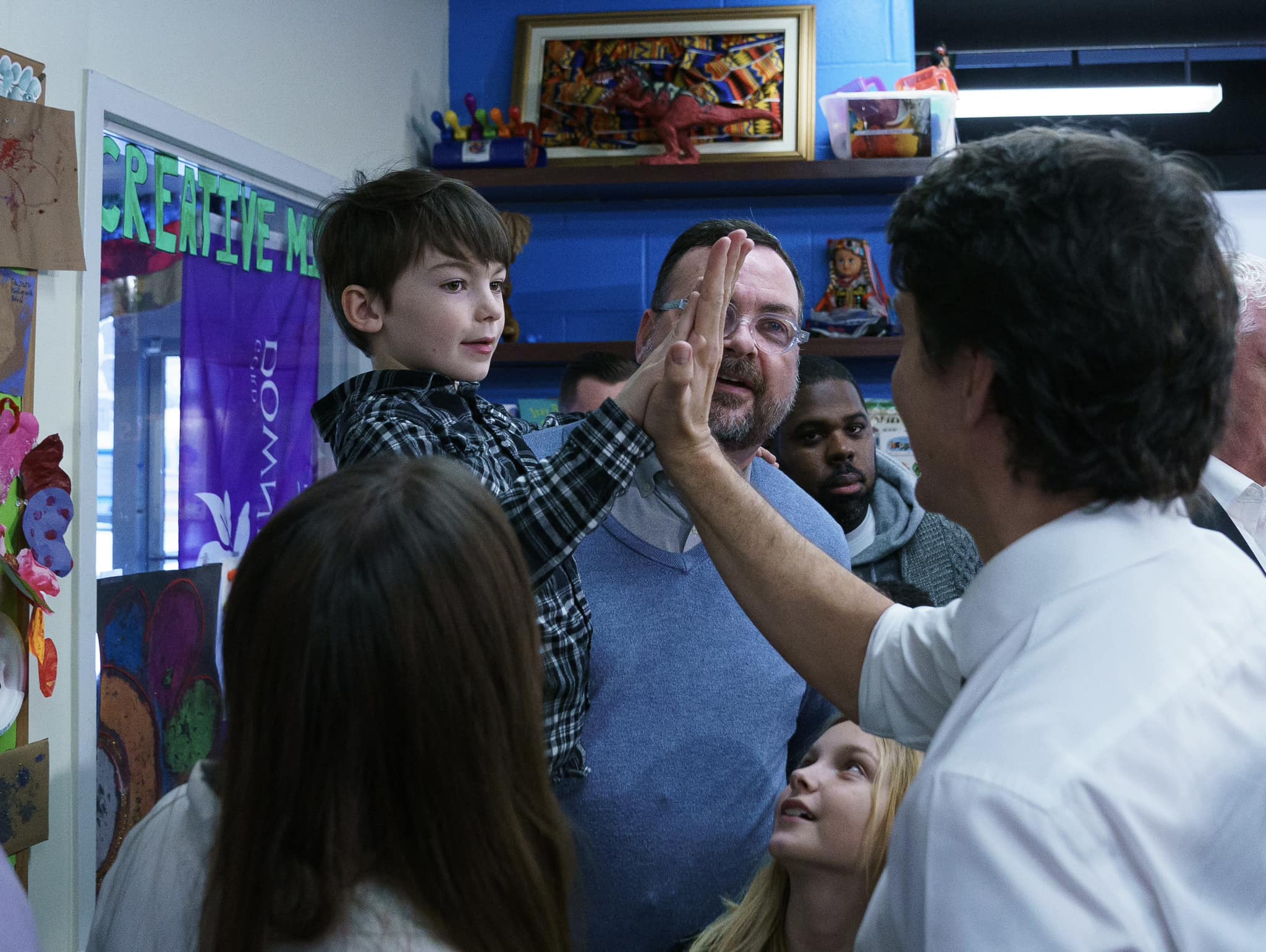Canada News
What needs to happen next for Canada to have a successful school food program

If lunches are not adequately funded and prepared too far from schools, it can lead to the production of highly processed heat-and-serve meals. (File Photo: Justin Trudeau/Facebook)
The government says this new funding will augment existing programs in the provinces and territories and aims to reach 400,000 more students in Canada.
To do so, the federal government will begin negotiating transfer agreements with the provinces and territories, similar to its child-care agreements, that will include key metrics to track progress and hold governments to account.
We anticipate these transfer agreements will be informed by the forthcoming National School Food Policy, which is expected soon.
As the transfer agreements are being negotiated, we hope that each province and territory will convene an inter-ministerial working group to provide comprehensive support to school food programs given they are relevant to the ministries of education, health, agriculture and economic development.
As researchers and co-chairs of the Canadian Association for Food Studies’ School Food Working Group, there are three things we think should happen next to set Canada’s school food program up for success.
Potential paths to success
As a late-comer to establishing a National School Food Program, Canada has a unique opportunity to learn from the missteps of other countries.
The first priority should be evaluating the health, education and economic benefits of programs through rigorous prospective studies that follow children and their families over time while also conducting research examining program implementation.
Part of this research should include evaluating universal free school meals programs compared to “pay-what-you-can” models.
Overall, there is a body of research showing that offering universal free school meals removes stigma, reduces program administration time and costs, reduces per unit meal costs, eliminates eligibility errors, boosts student attendance and achievement, reduces rates of school suspensions and other forms of discipline and increases participation.
But similar findings do not yet exist for the “pay-what-you-can” model because it is unique to Canada. These outstanding questions include:
- Will schools in less affluent areas with smaller populations be able to sustain pay-what-you-can where economies of scale and parental contributions are limited?
- What level of student participation reduces stigma and increases program acceptance?
Kitchens and trained staff
The second priority, as we’ve learned through our own research, is that adequate school food infrastructure and well-trained school food staff are key to success. Many schools in Canada lack basic kitchen equipment and some schools are without a kitchen altogether.
This doesn’t necessarily require building a kitchen in every school, but rather, where possible, retrofitting current industrial kitchens available in a community so they can produce high-quality meals that can be delivered and heated at schools.
Individual schools simply need the equipment to prepare vegetables and fruit and to heat and serve food.
There is also a need to invest in comprehensive training of school food staff so they have the cooking skills to prepare hundreds of meals from basic ingredients, understand child nutrition and can meet the wide range of cultural food expectations of Canada’s diverse communities. This also means paying workers a living wage so they see school food jobs as a career path.
Policymakers, school food program managers and school boards should consider first conducting a school food infrastructure audit to assess where infrastructure supports are needed to ensure success at all their schools.
Our forthcoming book on school food programs in Canada illustrates these requirements through a series of case studies on promising school food program delivery models. We’ve found some of the most cost-effective models are in urban areas where schools can work together to produce meals.
This model, however, requires initial investment, but it will bring meal cost savings for decades to come.
On a cautionary note, however, as we’ve learned from the United States, if lunches are not adequately funded and prepared too far from schools, it can lead to the production of highly processed heat-and-serve meals.
The key is to strike a balance with fresh, whole food meals made in local centralized production kitchens where feasible and made in individual schools where centralization is not practical.
Procuring local food
Our third priority is food procurement policies. For a national school food program to support local and sustainable food systems and economies, it’s important to have targets and policies in place to procure food locally. Provinces and territories could set individualized local food procurement targets, such as setting minimum percentages for local food, based on their unique food systems.
Policies that enable culturally important practices like harvesting traditional or locally grown foods in Indigenous communities are also needed. Policymakers should review regulations and competitive bidding processes that could restrict a school’s ability to purchase and source locally grown and harvested foods.
Investing in more local food infrastructure can aggregate food and provide last-mile delivery, something we know is crucial for connecting local producers with schools. This is important to ensure programs contribute meaningfully to economic development in all Canadian communities. Overall, universal free school meals (breakfast and lunch for students regardless of income) have an impressive return on investment at two-and-a-half to seven times the return in human health and economic benefits in comparable high-income countries.
A national school food program can contribute to building a healthier, more equitable society. Let’s ensure we make it the program children deserve.![]()
Amberley T. Ruetz, Postdoctoral Fellow, Department of Community Health and Epidemiology, University of Saskatchewan and Rachel Engler-Stringer, Professor, Department of Community Health and Epidemiology, University of Saskatchewan
This article is republished from The Conversation under a Creative Commons license. Read the original article.





















